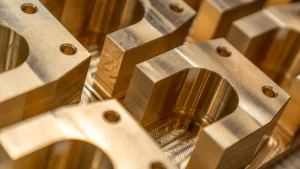
PSSエッチングキャリアは、光抽出と熱管理における重要な課題に対処することで、LED性能を変革します。 パターン化されたサファイア基質を作成することによって、それは改良された効率および信頼性をもたらすガリウム窒化物(GaN)の層の変位の欠陥を減らします。 最大13%で発光効率を高め、標準のサファイアウエファーと比較して37%以上の光出力電力を向上させます。 基板の精密な構造は、光の散乱を最適化するだけでなく、高度な製造技術をサポートしています.
要点
- PSSエッチングキャリアは軽い抽出を改善することによってLEDの性能を高めます、標準的なサファイアのウエファーと比較される37%の高い光出力電力に終って.
- パターン化されたサファイア基板(PSS)の構造パターンは、ガリウム窒化物(GaN)層の分散不良を減らし、約13%で発光効率を高めます.
- 耐熱性を最小にし、LEDの長寿そして信頼性を高めるPSSエッチングによって有効な熱放散は達成されます.
- LEDの性能の均等性はPSSエッチングによって保障され、表示および自動車照明のような適用のために重要な一貫した軽い出力を提供します.
- 製造業者は、PSSエッチングキャリアを高品質LED生産のための費用対効果の高い選択にすることで、欠陥率の低減とスケーラビリティの向上に寄与します.
- エンドユーザーは、電力コストを削減し、環境への影響を削減するより明るく、よりエネルギー効率の高いLEDを楽しんでいます.
- PSSエッチングによって強化されたLEDの多様性は、スマート照明と先進的なディスプレイ技術で革新的なアプリケーションの新しい可能性を開きます.
PSSエッチングとは?
PSSエッチングは、高性能LEDや半導体の製造において重要な役割を果たしています。 サファイア基板に精密なパターンをつくることで、光抽出を促進し、デバイスの効率性を向上させます。 近代的な製造に不可欠であることは、均一性と信頼性を確保する高度な技術を含みます.
パターン型サファイア基板(PSS)の理解
パターン化されたサファイアの基質(PSS)は多くのLED装置のための基礎として機能します。 これらの基質は円錐形かピラミッド形パターンで構成される独特な表面の設計を特色にします。 窒化ガリウム(GaN)層に分散不良を低減し、LED性能に重要な設計です。 パターンはより効果的に散らばり、平らなサファイアの基質と比較される70%によって軽い出力電力を増加させます.
PSSの製作は、フォトレジストレイヤーでコーティングされたサファイアウエファーから始まります。 リソグラフィは、プラズマまたは化学プロセスを使用してサファイアにエッチングされるフォトレジストに特定のパターンを公開します。 この構造表面は、光抽出だけでなく、高品質のGaN層の成長をサポートし、より良いデバイス信頼性を保証します.
PSSエッチングプロセスとその目的
PSSエッチングプロセスは、サファイア基板から材料を削除し、目的のパターンを作成します。 ドライエッチング、特に誘導結合プラズマ(ICP)方式は、最も一般的な技術です。 この方法は、フッ化物ベースのプラズマガスとマイクロ波エネルギーを使用して、結晶構造をエッチングし、密で均一なパターンを形成します。 ドライエッチングは遅くなりますが、LED製造にとって重要な精度と一貫性を保証します.
典型的なPSSエッチングプロセスには、次の手順が含まれます
- フォトレジストアプリケーション: : : サファイア基板にフォトレジストの層を塗布します.
- パターン露出: リソグラフィは、フォトレジストに目的のパターンを公開します.
- エッチング: プラズマガスは基板から材料を除去し、パターン表面を作成します.
- 形状の形成: 追加のステップは、パターンを精製し、レンズのようなまたは二重凹凸形状を形成し、光抽出を強化します.
このプロセスは、約13%による微分な効率を向上させるだけでなく、基板全体の均一性を確保します。 結果は信頼できる、有効な LED 構造です.
なぜPSSなのか EtchingはLEDおよび半導体の適用のための重要なキャリアです
PSSエッチングは、性能とスケーラビリティを高めるため、LEDおよび半導体アプリケーションにおける重要なキャリアとして機能します。 安定して精密なプラットフォームを提供することで、GaN層の成長をサポートし、LED機能に不可欠です。 構造されたパターンは欠陥を減らします、熱放散を改善し、LEDsをより明るく、より効率的にさせる軽い出力を高めます.
半導体製造、PSSエッチングキャリアなど PSS/ICPの特長 エッチングキャリア プラズマエッチング時の安定性を確保します。 これらのキャリアは、高品質のデバイスにとって重要な材料除去の均一性を維持します。 プラズマエッチングの過酷な条件に適した熱・耐食性で、高度な製造プロセスを実現します.
さらに、革新的なデザインは、 SiCコーティングPSSエッチングキャリア プロセスをさらに高めて下さい。 これらのキャリアは、精密を確保しながら極端な条件に耐え、生産をスケールアップし、現代の技術の要求を満たすために不可欠です.
「PSSエッチングの使用は、LED製造に革命をもたらし、光出力電力を増加させ、デバイスの信頼性を向上させました。 半導体アプリケーションにおけるその役割は、先進技術の重要性を強調しています
PSSのエッチングのキャリアのBoosts LED ソリューション

高められた軽い抽出
PSSエッチングキャリアは、LEDの光抽出を大幅に向上させます。 エッチングプロセス中に作られたパターン加工サファイア基板(PSS)は、フラットサファイアウエハよりも効果的に散布します。 この散布は内部の反射を減らします、より多くの光がLEDから脱出することを可能にします。 PSSエッチングのLEDは30%以上の発光効率を向上させることができることを示しています。 また、PSSのLEDの平均出力電力は、標準サファイアウエハと比較して最大37%高いと報告されています。 これらの改善は、メーカーとエンドユーザーの両方に利益をもたらすLEDをより明るく、よりエネルギー効率性を高めます.
円錐形やピラミッド形状など、基質上のユニークなパターンは、この過程で重要な役割を果たします。 これらの形状は、それ以外の場合は、LED内部にトラップされる光をリダイレクトし、使用可能な光の量を最大化します。 光抽出を最適化することにより、PSSエッチングキャリアは、LEDが住宅照明から高度なディスプレイまで、さまざまな用途で優れた性能を提供することを確認します.
改善された熱放散
ヒートマネジメントは、LED性能と長寿の重要な要素です。 PSSエッチングキャリアは、ガリウム窒化物(GaN)層の成長のためのより安定した効率的なプラットフォームを作成することにより、より良い熱放散に貢献します。 基板上の構造パターンは熱抵抗を低下させ、熱がLEDをさらに分散させることを可能にします。 これにより、ホットスポットを防止し、過熱のリスクを最小限に抑えます。これにより、LEDを時間とともに劣化させることができます.
効率的な放熱もLEDの信頼性を高めます。 熱が効果的に管理されるとき、LEDは最適温度で作動します、失敗の可能性を減らします。 これにより、PSSエッチングキャリアは、効率的なだけでなく、耐久性だけでなく、LEDを製造する上で不可欠なコンポーネントになります。 消費者がより長持ちする製品を楽しんでいる間、製造業者は欠陥率を削減する恩恵を受けます.
LEDの性能の均等性そして信頼性
LED性能の均一性は、ディスプレイや自動車照明などの一貫した光出力を必要とするアプリケーションにとって不可欠です。 PSSエッチングキャリアは、GaN層の成長のために精密で安定した基質を提供することで均一性を保証します。 サファイア基板にエッチングされたパターンは、光と熱の均一な分布を促進し、デバイス全体で一貫した性能を発揮します.
信頼性は、PSSエッチングキャリアを使用する別の重要な利点です。 プロセスは、LEDのパフォーマンス劣化の一般的な原因であるGaN層の変位欠陥を減らします。 これらの欠陥を最小限に抑えることにより、PSSエッチングキャリアは、LEDの構造的完全性を高め、寿命にわたって確実に実行します。 この信頼性は、高い需要のアプリケーションで特に重要であり、一貫性のある性能は非交渉可能です.
半導体産業におけるPSSエッチングキャリアの役割

先進製造プロセスをサポート
半導体業界は、精度と効率性を兼ね備えています。 PSSエッチングキャリアは、プラズマエッチングなどの重要な製造工程の安定性を確保することで、これらの目標を達成する重要な役割を果たしています。 エッチング工程中、搬送機はウエハを安全に保持し、動きを減らし、均一な材料除去を実現します。 この安定性は、高品質のデバイスを製造するために不可欠である欠陥を最小限に抑えます.
プラズマエッチング、特に誘導結合プラズマ(ICP)方式は、高度なキャリアに依存して一貫性を維持します。 これらのキャリアは、フッ化物ベースのプラズマガスとマイクロ波エネルギーの過酷な条件に耐え、サファイア基板上の正確なパターン形成を可能にします。 結果は、コーンやピラミッドなどのパターンの密で均一な配列で、LEDや他の半導体デバイスのパフォーマンスを向上させます.
メーカーは、PSSエッチングキャリアの適応性から高度な設計に利益をもたらします。 LEDなどの半導体部品を製造する場合でも、これらのキャリアは、比類のない信頼性で厳格なプロセスをサポートします。 エラーを減らし、スループットを改善することにより、メーカーは、効率的で革新的な技術に対する成長した需要を満たしています.
「PSS/ICPエッチングキャリアは、プラズマエッチング中にウェーハの安定性を高め、一貫した結果をもたらし、欠陥を削減します。」 – – CNVETについて エネルギー
ミニチュア化とイノベーションの融合
より小さい、より強力な装置のための要求は成長し続けます。 PSSエッチングキャリアは基板の精密な構造をサポートすることで小型化を実現します。 この精度により、メーカーは性能を損なうことなくコンパクトなコンポーネントを作成することができます。 たとえば、サファイア基板にエッチングされたパターンは、光抽出と熱放散を改善し、小型LEDでの使用に最適です.
半導体業界におけるイノベーションは、境界線をプッシュする能力にかかっています。 PSSエッチングキャリアは、新しいデザインや材料を実験するための信頼性の高いプラットフォームを提供することでこれを容易にします。 シリコンカーバイド(SiC)コーティングなどの高度なキャリアにより、耐久性と精度が向上しました。 最先端技術の開発に欠かせない機能です.
ドライエッチングの低速で精密な性質、PSSウエハの製造のための一般的な方法、信頼性の高いキャリアの重要性を強調します。 プロセスは時間がかかりますが、現代のアプリケーションにとって重要な高品質のパターンの作成を保証します。 半導体業界における小型化とイノベーションの両立を可能にし、PSSエッチングキャリアが進んでいます.
「当社の革新的なPSSエッチングキャリアは、エッチングプロセス中に比類のない精度と信頼性を提供します。」 – – セミセラ半導体 株式会社テクノロジー
業界のステークホルダーのためのPSSエッチングキャリアの利点
メーカーのメリット
PSSエッチングキャリアを生産プロセスに組み込むことで、メーカーは大きな利点を得る。 最も注目すべき利点の1つは、発光効率の改善です。 パターン型サファイア基板を使用することで、約13%で光抽出効率(LEE)を向上させることができます。 これにより、エネルギー効率の高い照明ソリューションの需要が高まり、エネルギー消費を削減し、より明るいLEDに直接変換します.
PSSエッチングプロセス中に作成された構造パターンは、ガリウム窒化物(GaN)層の分散密度も減少します。 これにより、欠陥を最小化し、高品質のLEDチップに導きます。 少数の欠陥によって、製造業者は生産の間により低い拒絶率を経験し、時間および資源を両方節約します。 また、PSSのLEDの平均出力電力は、標準のサファイアウエハよりも最大37%高いと報告されています。 この改善により、メーカーは、明るさと性能の市場期待を満たすか、上回るLEDを生成することができます.
PSSエッチングキャリアは、製造におけるスケーラビリティにも対応しています。 精度と信頼性により、製造数量が増加しても、メーカーは一貫した品質を維持することができます。 都市照明システムや自動車用途など、大規模プロジェクトの要求に応えるには、この一貫性が不可欠です。 さらに、シリコンカーバイドコーティングのような高度なキャリアの耐久性は、プラズマエッチングの過酷な条件に耐えることができるため、長期使用のための費用対効果の高い選択を可能にします.
エンドユーザーのメリット
エンドユーザー、個人や企業、PSSエッチングキャリアで可能な進歩から大きな利益を得るかどうか。 最も近い利点の1つはLEDsの高められた明るさです。 37%まで増加した光出力電力で、LEDは家庭の照明から産業セットアップまで、さまざまな用途に適した照明を提供します。 この改善は、ユーザーエクスペリエンスを強化するだけでなく、特定のスペースに必要なLEDの数を減らすだけでなく、全体的なコストを削減します.
エネルギー効率は別の重要な利点です。 PSSエッチングによるLEDの発光効率が向上し、優れた性能を発揮しながら消費電力を削減します。 エンドユーザーにとって、これは電力量を下げ、環境フットプリントを削減するために使用されます。 特に、事業では、エネルギー効率の高いLEDシステムに切り替えて重要な節約を達成することができます.
信頼性と長寿は、追加の特典です。 PSSエッチングプロセスにおける変位欠陥の低減により、LEDがより耐久性があり、故障が少なくなります。 エンドユーザーは、住宅照明、自動車ヘッドライト、またはハイテクディスプレイで使用されるかどうかにかかわらず、一貫したパフォーマンスのために、これらのLEDに依存することができます。 この信頼性は頻繁な取り替えのための必要性を減らします、便利および費用節約を提供します.
最後に、PSSエッチングキャリアによって強化されたLEDの多様性は、イノベーションの新しい可能性を開きます。 スマート照明システムから高度なディスプレイ技術まで、エンドユーザーは、効率的なだけでなく、現代のニーズに適応できる製品から恩恵を受けます.
PSSエッチングキャリアはLEDの効率および半導体の革新の進歩の礎石として立ちます。 軽い抽出を高め、熱管理を改善し、信頼性を保障することによって、それはLEDsの性能を変えます。 プロセスはGaNの層の変位の欠陥を減らします、13%までの明るい効率を後押しし、37%を増加させます。 テクノロジーが進化するにつれて、PSSエッチングキャリアの役割は成長し、より明るく、より効率的で費用対効果の高いLEDを作成するための進捗を駆動します。 現代の製造業への影響は、照明や電子機器の未来を形づける上で欠かせない価値を強調しています.





